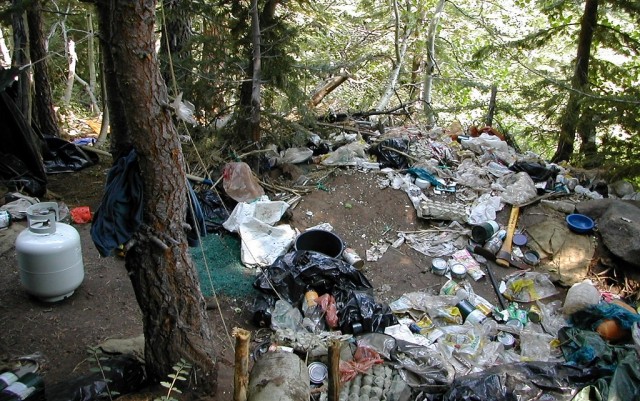THE WEB—Bloomberg News last week reported on pesticide use on cannabis crops, highlighted by increased implementation of lab testing in California and Oregon. Alarming data about industry pesticide use, as well as toxic waste concerns raised by illegal marijuana grows, have received attention in recent multiple media reports.
According to the Bloomberg article, testing in Colorado has successfully decreased pesticide use from forty-nine percent of samples testing positive for pesticides in 2016, to thirteen percent so far this year. However, the combustible and consumable nature of cannabis products and medicines further complicates the selection of pesticides appropriate for use on crops.
The piece also noted attempts by Scott’s Miracle Grow in June to register pesticides for cannabis crops with the Environmental Protection Agency were refused, because of marijuana’s illegal federal status. For now, state officials, industry members, and medical marijuana advocates are working to develop protocols and policy that will determine safe use of pesticides (and other chemicals) for commercial cannabis growers, in new legal markets.
Reuters on Sunday reported on toxic waste from illegal marijuana grows located in California’s national parklands, as well as on private property. According to data cited by Reuters, an ecologist employed by the State of California to document illegal grows said federal lands in California contain up to “731,000 pounds of solid fertilizer, 491,000 ounces of concentrated liquid fertilizer and 200,000 ounces of toxic pesticides.”
The ecologist, who had visited more than one hundred illegal grow sites, added that levels of toxic chemicals in areas he tested had increased, and that, “… California’s forests hold forty one times more solid fertilizers and eighty times more liquid pesticides than Forest Service investigators found in 2013.”
According to the Reuters report, information sourced from the U.S. Forest Service listed a backlog of 639 illegal grow sites still awaiting “restoration,” in California, as well as similar toxic conditions existing at illegal grows in Washington State and Oregon.
Officials also noted incentives for continued illegal cannabis cultivation activities, especially avoidance of paperwork, permits, and tax fees for growers that decide to stay outside the law. A supervisor from Trinity County, California, was quoted, saying there are 4,000 illegal grows in his county alone.
“One of the DEA’s most effective arguments on Capitol Hill, to push us back, is environmental issues, ironically enough. Even though I don’t believe the DEA cares that much about the environment, they have found that it’s a talking point that resonates with members of Congress – so there’s that component,” Americans for Safe Access Executive (ASA) Director Steph Sherer told mg Magazine for a recent update on legislative activities on Capitol Hill.
While the DEA and Department of Justice are a constant concern for entrepreneurs and industry members, Sherer pointed out other federal agencies also have purview over cannabis regulation, including OSHA and the EPA.
“… The only reason we wouldn’t see more OSHA or EPA violations is because their budgets have been cut. The Department of Justice is the only one they’re considering not cutting,” she added.












